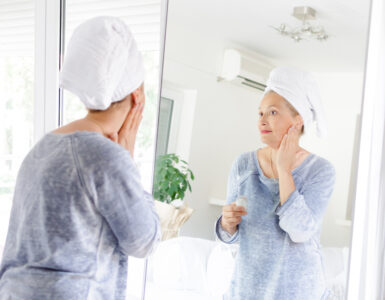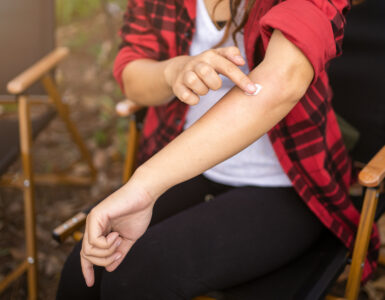Thalia Swinyer, Dermatological Nurse with UCAN comes to Studio 5 to talk about skin cancer prevention and what you should know to help prevent the disease.
Statistics in Utah
• Utah’s skin cancer rate is among the 10 highest in the nation, Utah health officials urge residents to take steps to keep their skin safe.
• Data from the Centers for Disease Control and prevention show the overall U.S. melanoma rate is 17 per 100,000 persons, while Utah’s rate is 25 per 100,000.
• The District of Columbia has the lowest incidence at just over 5 per 100,000.
• Other states with high rates include Oregon, Washington, Idaho, Vermont, and New Hampshire.
• Utah Department of Health (UDOH) data show that the rate of melanoma—the deadliest form of skin cancer—is increasing.
• In 2005, 554 Utahns were diagnosed with melanoma, up from 494 in 2004.
• Every year, melanoma kills an average of 63 Utah residents.
• The American Cancer Society (ACS) expects 62,480 new cases of melanoma and 8,420 deaths from the disease to occur in the U.S. during 2008.
• The melanoma rate has been climbing in the U.S. since the 1970s.
• The American Cancer Society estimates that in Utah, 65 to 90 percent of melanomas are caused by the sun’s ultraviolet rays.
• More than one million cases of basal and squamous cell skin cancers, most of which are highly curable, occur each year across the nation, making skin cancer the most diagnosed form of malignancy.
Preventing Skin Cancer
• Exposure to the sun’s ultraviolet (UV) rays appears to be the most important environmental factor involved in the development of skin cancer.
• When used consistently, sun protective practices can prevent skin cancer.
1. Avoid the sun during the hottest time of the day, which is from 10:00 a.m. to 4:00 p.m.
2. Seeking shade
3. Use sunscreen with SPF 15 or higher. (Apply sunscreen 30 minutes before being in the sun and re-apply every two hours or after swimming or sweating, If using a self-tanner or bronzing product don’t forget to use sunscreen. Most of these products do not offer protection from the sun’s rays.)
4. Cover up by wearing long-sleeve shirt, wide-brimmed hat, long pants and sunglasses.
5. Avoid tanning beds – there are no safe rays including indoor tanning.
• Make sunscreen a part of daily routines, and combine it with at least one other sun protection measure for maximum effectiveness.
• Even on cloudy days, the sun’s ultraviolet rays burn through the cloud cover and can damage your skin.
• Utahns are at higher risk for skin cancer due to the state’s high elevation, predominantly fair-complexioned population, and frequent sunny days.
For more information call UDOH health resource line at 1-888-222-2542 or by visiting www.ucan.cc
The mission of the Utah Department of Health is to protect the public’s health through preventing avoidable illness, injury, disability and premature death, assuring access to affordable, quality health care, and promoting healthy lifestyles.















Add comment